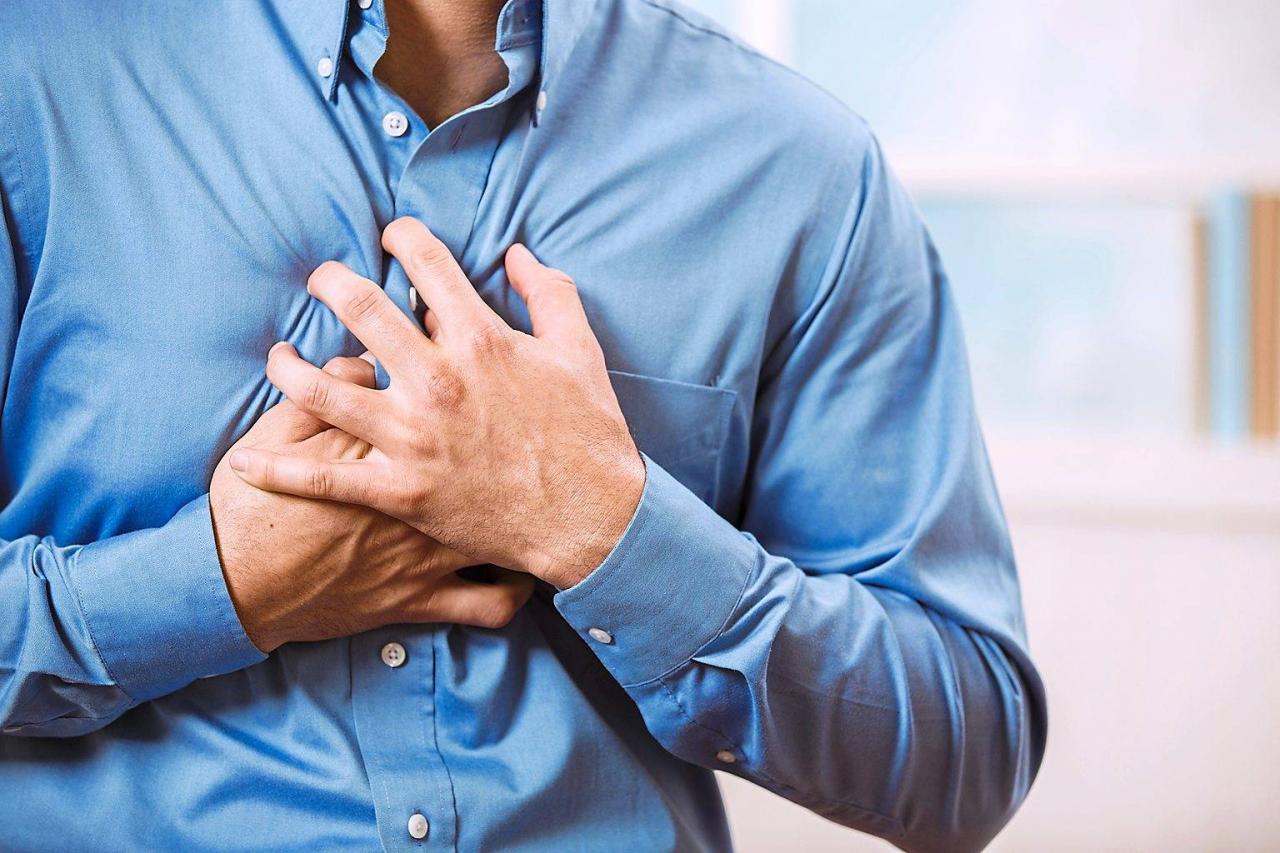Heart Disease of the most common is coronary heart disease. This disease occurs , when the supply of oxygen-rich blood to the heart muscle is obstructed by plaque in the blood vessels of the heart or coronary arteries.
On the walls of the arteries can occur conditions ateroskelosis , which is the buildup of cholesterol and other substances, such as calcium and fibrin, which forms a blockage or plaque in the arteries. Plaque can form on the walls of the arteries even when a person is young. But as you get older, the risk of plaque formation will be higher. If left untreated, over time this plaque can lead to reduced elasticity of arteries and disrupt blood flow.

More About Coronary Heart Disease
The bigger the plaque, the narrower the arteries of the heart, so that the supply of oxygen-rich blood to the heart will be less. Plaque can also come off and then block most of the blood flow to the arteries. When this blockage of blood flow occurs in the coronary arteries, a heart attack can occur .
Things that Increase the Risk of Coronary Heart Disease
So far, the exact cause of plaque formation in arteries is still not known with certainty. However, the following things can increase a person’s risk of developing atherosclerosis:
Cigarettes
Smoking is one of the factors that most plays a role in increasing the risk of coronary heart disease . Smokers are predicted to have a 24% greater risk of coronary heart disease than nonsmokers. The content of nicotine and carbon monoxide in cigarettes makes the heart work harder than usual. Both of these substances also increase the risk of blood clots in the arteries. Unfortunately, other chemicals in cigarettes can also damage the lining of the coronary arteries, thereby increasing the risk of developing coronary heart disease.
Cholesterol
Cholesterol that flows too much in the blood can cause coronary heart disease. The type of cholesterol that increases the risk of coronary heart disease is low-density lipoprotein (LDL) which is commonly referred to as ‘bad’ cholesterol. Because, this cholesterol has a tendency to stick and accumulate in the coronary arteries.
Diabetes
Patients with diabetes is predicted to have twice the risk of higher coronary heart disease. This is presumably because diabetics have a thicker layer of blood vessel walls. The thickness of the coronary artery walls can interfere with the smooth flow of blood to the heart.
The occurrence of blood clots
Blood clots or thrombosis that occur in the coronary arteries will block the blood supply to the heart. The process of this blood clotting is closely related to other factors, such as inflammation, high cholesterol levels, uncontrolled blood sugar, and stress .
High blood pressure High blood
pressure can also increase the risk of coronary heart disease. A person is categorized as having high blood pressure if they have a systolic pressure in the range of 130 mmHg or more, or a diastolic pressure of 80 mmHg or more. Systolic pressure itself is defined as a measure of blood pressure when the heart contracts to pump blood out. While diastolic pressure is blood pressure when the heart muscle stretches to fill blood.
How to Prevent Coronary Heart Disease
To minimize the risk of developing coronary heart disease, there are several ways you can do, including:
- Do regular exercise .
- Apply a healthy diet and balanced nutrition, increase your intake of fruits and vegetables, reduce foods that contain excess cholesterol and salt.
- Stop smoking.
- Lose weight if overweight.
- Control blood pressure.
- Take control of stress .
- Enough rest. Research shows that lack of quality and hours of sleep are associated with an increased risk of developing coronary heart disease.
The danger of coronary heart disease will affect your quality of life, it can even cause sudden death due to heart attack. Therefore, consult your doctor immediately if you are at high risk of developing this disease, or if you already experience symptoms of coronary heart disease, such as chest pain that occurs during strenuous or stressful activities, shortness of breath, cold sweats, and chest pain that radiates to the arms and neck. .